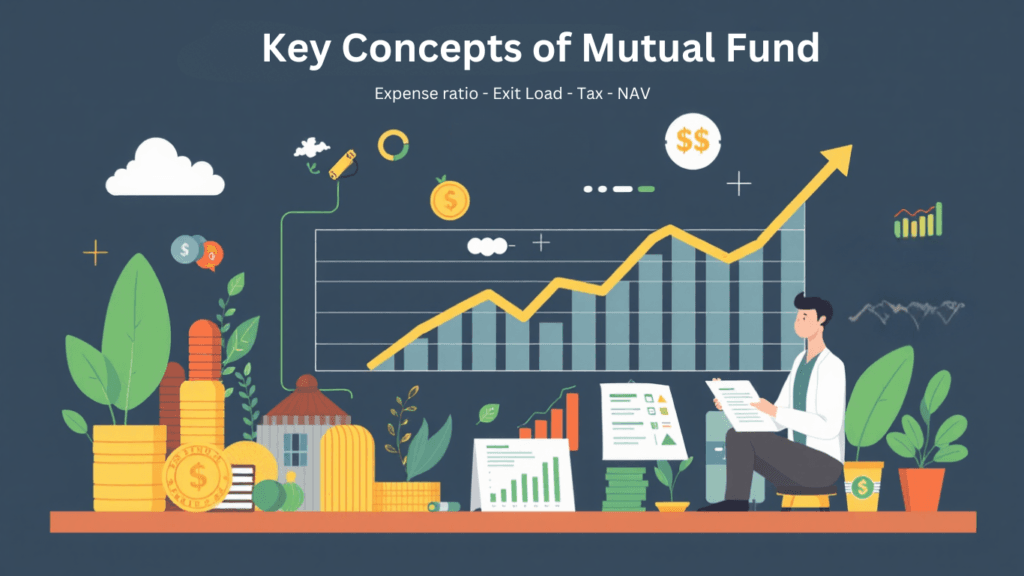Today financial markets are moving at an incredible speed, and choosing the right investments can seem a daunting task. Two – out of the countless funds in the market, how do you track down the fund that best suits your financial objectives? Whether you are a seasoned investor or a newbie planning to start an investment, selecting mutual funds is one of the most crucial decisions that can make or break your financial future! In this blog post, we will take you through 9 steps to help you select the right mutual fund per your investment goal and risk appetite. So, come along, and let us start on this road to prosperity!
9 Essential steps to find the right mutual fund:
- Identify Your Goals
- Assess Your Risk Tolerance
- Research Fund Performance
- Check the Expense Ratio
- Review the Fund Manager’s Experience
- Consider the Fund’s Holdings
- Diversification
- Read the Prospectus
- Consult a Financial Advisor
Understanding Mutual Funds:

A mutual fund is an investment vehicle that aggregates funds from multiple investors to buy a wide selection of stocks, bonds, or other securities. What are mutual funds — Mutual funds are professionally managed portfolios managed by a professional fund manager that allows individual investors to buy professionally managed portfolios and the potential for reduced risk through diversification.
If you are a newbie investor in Mutual Funds or want to have a better understanding of them, read my previous blog post on ” Understanding Mutual Funds: From Basics to Benefits“. It provides the fundamentals and benefits which is handy for investors of all stripes.
Steps to Filter Mutual Funds:
1. Identify Your Goals
- Long-term vs. Short-term: Are you investing for retirement, a house, or some other long-term goal, or a short-term goal, like saving for a vacation or an emergency fund?
- Income or Growth: Choose whether you need dividends for regular income or just capital appreciation. If you’re looking for a steady income, choose funds that pay dividends regularly, like bond funds. If you are looking to grow your investment over the period, consider a growth-oriented fund that will re-invest earnings to gain capital appreciation.
2. Assess Your Risk Tolerance
- Seek Volatility Comfort: Evaluate your comfort as well as emotional level with market fluctuations and the possibility of investment losses. Ask yourself: How would I react to my short-term investment losses?
- Overall Financial Condition: Evaluate your financial stability, then determine how much you can invest without impacting your day-to-day life.
- Track Record: Based on previous investments and risk management strategies. Ask yourself a question: Did I remain calm during market downtimes? This will help you make better decisions.
3. Research Fund Performance:
- Track Performance: Inspect the fund’s historical performance across different time frames, like 1-year, 5-year, and 10-year intervals, to gain insight into how the fund performed in different market conditions. Evaluate how the fund performed in economic downtime. Additionally, consider the fund’s longevity.
- Benchmark: Compare the performance of a fund with relevant benchmarks and Peer Funds.
- Consistency: Look for consistency, not just a spike in results.
4. Check the Expense Ratio & Exit load:

- Expense Ratio: See how much the mutual fund charges as an expense ratio to manage the fund.
- Exit Load: A fee charged by the mutual fund company when investors redeem or sell the unit before the specified period. The specified period and exit load percentage may vary depending on the mutual fund.
- Compare expense ratio: Compare with a similar fund’s expense ratio to find a cost-effective one.
- Keep Costs Low: Invest in funds with low expense ratios and minimal exit load period for better returns.
Important: While choosing a low expense ratio is an important factor to consider, the performance of the mutual fund is indeed crucial.
For more information about Expense ratio, Exit load, Tax implications, Sector exposure, etc. Do check our blog ” Mutual Fund Fundamentals“
5. Check out the experience of a Fund Manager
- Fund Manager: Look for those fund managers who have a successful track record.
- Management Style: Familiarize yourself with the manager’s style and philosophy when it comes to investing.
- Experience: Take into account how long the manager has worked with the fund.
6. Consider the Fund’s Holdings
- Allocation of Assets: Look at what the fund invests in (stocks, bonds and so on)
- Sector Exposure: Evaluate the fund’s allocation in various sectors and industries.
- Geographical and regional diversification: The fund should be diversified across regions.
7. Diversification
- Risk Diversification: Invest in funds that provide open access to a wider range of asset classes.
- Portfolio balance: Choose funds that maintain a balance between risk and return.
- Over Concentration: Avoid funds that concentrate on a single asset or sector. This type of fund comes under sector-based Funds (Very high risk).
8. Read the Objective
- Objective: Read the objective for specific information about a fund’s goals, strategies, and risks.
- Investment strategy: Information about how and where the fund intends to invest.
9. Consult a Financial Advisor
- Professional Advice: Get a financial advisor to give you personalized recommendations.
- Customized Plan: A customized investment plan prepared to take your financial situation and goals into account.
Professional advice can provide personalized recommendations for investment plans. If you find affordability is an issue, consider alternatives like online resources, robo-advisors, educational content, community groups, or employer benefits.
Remember, the objective is to educate yourself with enough knowledge to make own decisions that align with your financial position and goals.





